Kędzierzyn-Koźle County,Opole Voivodeship 发布时间:2021-07-15
Ⅰ. Population and Area
Population (2019-06-30)
• Total 60,852
• Density 490/km2 (1,300/sq mi)
Area
• Total 123.42 km2 (47.65 sq mi)
Website http://www.kedzierzynkozle.pl
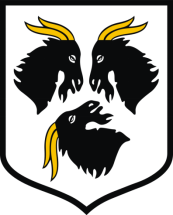
Ⅱ.Natural Geography (environment and resources)
Kędzierzyn-Koźle is located in the historic Silesia (Upper Silesia) region at the confluence of the Oder River and its Kłodnica tributary. Situated on the lower reaches of the Gliwice Canal, it is a place of a major river port, has rail connections with all major cities of Poland and serves western outskirts of the Upper Silesian Metropolitan Union. The town is major location of chemical industry, the site of several factories and a power plant at Blachownia Śląska.
In 1975, the historic core Koźle on the left bank of the Oder was merged with the municipalities of Kędzierzyn, Sławięcice (Slawentzitz), and Kłodnica (Koldnitz) on the right shore, which had developed to suburbs since the 19th century industrialisation, to form present-day Kędzierzyn-Koźle.
Location: southern-western Poland, Opole province
Area: 123.4 km2
The city draws with its attractiveness in terms of its particular localization. It is located at the crossroads of the transportation routes between the large agglomerations of Upper and Lower Silesia. The Oder River, together with the Gliwice Canal flowing through the city, ensures the water connection with Western Europe and the Upper Silesian Coal Basin.
What is important – the technical parameters and equipment of the particular river ports within the city limits allow for transhipment and storage of goods, which are transported further. Kędzierzyn-Koźle is also one of the main railway junctions because it is located on a route of national and international importance.
The city has a convenient system of road connections (road C-E59). One result of the fact that the city bypass was completed, we also have a good connection with the A4 motorway in Olszowa to which access by car takes from 15 to 30 minutes depending on the place of departure.
In arm’s reach, so to speak – because of the proximity of the airports in Krakow, Katowice, Wroclaw and Ostrava – there is also convenient air transportation. Kędzierzyn-Koźle is placed in the very heart of Europe; six European capitals are within 300-500 km from here.
Roads
The city is located on the junction of transport routes of Upper and Lower Silesia. Kędzierzyn-Koźle is crossed by the following roads: national road no 40, national road no 45 and voivodeship road no 426. Part of the city bypass has been built, along with a convenient connection with the A4 motorway.
-Railway
-Kędzierzyn-Koźle is crossed by the international main line east-west, which is to be included in the European System of Rail Transport. The city has five railway stations.
-Waterways
-The city lies on the Oder Waterway on the junction of the Oder and the Gliwice Canal. Thanks to this, it has a water connection with Szczecin, Bydgoszcz, West Europe and eastern Upper Silesia through the Gliwice River Port.
-How far to?
-Gdansk - 485 km
-Katowice - 64 km
-Krakow - 136 km
-Lublin - 350 km
-Olsztyn - 449 km
-Poznan - 267 km
-Rzeszow - 296 km
-Szczecin - 460 km
-Border crossing with Czech Republic:
-Pietrowice Głubczyckie (55 km)
-Głuchołazy (64 km)
-Paczków (93 km)
-Cieszyn (77 km)
-Kudowa-Słone (151 km)
-With Germany:
-Olszyna (232 km)
-Świecko (320 km)
-Zgorzelec (262km)
-Border crossing with Russia:
-Bezledy (584 km)
-Border crossing with Lithuania:
-Budzisko (632 km)
-Ogrodniki (530 km)
-Border crossing with Belarus:
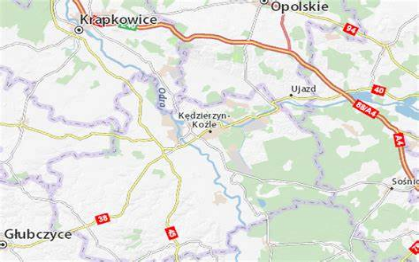
Ⅲ.Economy
-Kędzierzyn-Koźle relies on the development in every area of life: economic, business, social. There is a wide spectrum of possibilities. In the end, we are a City Full of Chances.
-There is no doubt that Kędzierzyn-Koźle is shaped by the industrial tradition. Many companies have located right here. Within the borders of the municipality there are some of the biggest Polish companies in the chemical industry. These include Grupa Azoty ZAK, Brenntag Polska, Petrochemia Blachownia, ICSO, Damen Shipyards, Cewe Color, Famet, Air Products, KOFAMA Koźle, and MARMA Polskie Folie, among others. Germans, British, Dutch, Greeks and Chinese were not afraid to invest in Kędzierzyn-Koźle. With us, everybody will fill the climate for development.
-The nearness of the industrial works and the developed network of secondary and vocational schools of various specialties make us not only a regional industrial centre but also an educational one. There are also plans taking shape for opening a department of Opole Technical University in Kędzierzyn-Koźle and thus the availability of well-qualified staff will increase for potential investors.
-Kędzierzyn-Koźle is a perfect place for all investors. It is enough to have a good plan and together with City Hall you can make every undertaking happen.
-Businessmen will find support in the City Hall and the communal organizational units. To ensure the favourable conditions for both investment and operations, the Kędzierzyn-Koźle Industrial Part and the Kędzierzyn-Koźle Business Incubator were established.
-Business and economy | Kędzierzyn-Koźle Town Hall https://www.kedzierzynkozle.pl/pl/strona/biznes-i-gospodarka
Ⅳ.Industrial Characteristics
-The town is major location of chemical industry, the site of several factories and a power plant at Blachownia Śląska.
-Industrial infrastructure, traditions and experience the city’s industrial tradition, infrastructure and dynamic growth make it an attractive place to run a business in various branches. Proximity of industrial plants and a network of vocational schools that offer various specialisations have turned Kędzierzyn-Koźle not only into an industrial centre but also into an educational one with well-qualified staff.
-German, British, Dutch and Greek investors are present here. The city is also home to one of the largest Polish chemical companies – Grupa Azoty ZAK S.A. The Kędzierzyn-Koźle Industrial Park creates conditions to undertake new ventures that contribute to the development of the City. The operation of the Kędzierzyn-Koźle Industrial Park is a chance to encourage entrepreneurship, productivity and innovativeness in the city. It also supports the creation of new jobs.
-Apart from the industry, services are also thriving, especially trade and community ones, for instance waste management, utilities supply, banking services and consulting, transport, telecommunications and education. The number of companies that are active in the city is on the increase, which proves the ongoing interest of investors, as well as the fact that the inhabitants are active and start their own businesses.
-Investor assistance
-The city has areas that are foreseen for business activity, it also promotes offers of private entities. For years, it has been concentrating on creating a friendly economic atmosphere; it provides reliable information, support and favourable conditions for entrepreneurs:
-Qualified staff. Entrepreneurs do not need to worry that they will have to depend on themselves. The commune offers professional help of people responsible for investor support.
-Development
-up-to-date local land development plan
-wide offer of investment opportunities
-availability of qualified staff (support in the choice of employees and contractors)
-tax incentives (possible tax exemption for new investments)
-help in finding business partners (constantly monitored cooperation fair)
-investor support (help in formal matters)
-investment sites included in the Katowice Special Economic Zone
-A potential investor is always welcome. This means, for example, individual support for significant investments, assistance of an “investment consultant”, and help in all administrative proceedings.
-Many potential customers
-Potential customers for companies operating in the city include circa 1 million inhabitants of 35 urban and rural communes of the Opole voivodeship. The potential market is significantly widened by the neighbourhood of the Silesian voivodeship and Lower Silesia, inhabited by circa 7.6 million people in 162 urban and rural communes. In sum, an investor who undertakes a business venture in our city has close access to 197 urban and rural communes and over 9 million clients. An advantage of our neighbourhood with the mentioned agglomerations is the fact that these are heavily industrialised areas. In view of that, there is real possibility for close cooperation with companies from the agglomerations, especially since the production branches are similar. The possibility of sales of products and services is greater due to proximity of the Czech market and our membership in the Praded Euroregion.
-City investment areas
-In accordance with the city’s local land development plan, the sites and buildings for potential investment offered by the city are foreseen for industrial, service and production purposes, as well as for nuisance services. The commune also has areas for service purposes connected with sports, leisure and tourism. The city investment offer includes areas that are owned by the commune Kędzierzyn-Koźle and those owned by the Kędzierzyn-Koźle Industrial Park – a company with the majority shareholding of the Kędzierzyn-Koźle commune. Investment sites also include buildings owned by the Military Property Agency and other companies located in the city which have provided information about sites for sale or rent.
-There are two especially attractive, unique offers: an investment area “Koźle Port”, once the largest river port on the Oder in Europe, the area of which is 35.57ha and the so-called Southern Field, i.e. 77ha for large professional investors.
-Business and economy | Kędzierzyn-Koźle Town Hall https://www.kedzierzynkozle.pl/pl/strona/biznes-i-gospodarka
-Key projects
-Finding co-financing from EU funds or the state budget for investment tasks carried out by municipalities is nowadays a key task for each Local Government Unit.
-Lists of investment tasks planned to be implemented each new year are filled with many undertakings of strategic importance. Considering the commencement of their implementation, the material scope, often depends on whether the commune is able to sign a co-financing agreement.
-Obtaining extra-budgetary funds means that part of the incurred funds returns to the budget of the unit in the form of reimbursement, which can be used to start another, new task. The Kędzierzyn-Koźle commune applies for funds from many sources available to us.
-The projects implemented so far have received support from, among others with:
-Regional Operational Program of the Opolskie Voivodeship,
-Human Capital Operational Program,
-The Innovative Economy Operational Program,
-Technical Assistance Operational Program,
-The Infrastructure and Environment Operational Program,
-Operational Program of Cross-Border Cooperation Czech Republic - Republic of Poland,
-Program of Support for social housing from the Subsidy Fund,
-National Program for the Reconstruction of Local Roads,
-Physical Culture Development Fund of the Ministry of Sport and Tourism,
-Cultural Infrastructure Development Program.
-Under the aforementioned programs, the commune's own tasks related to transport, economic, social infrastructure, environmental protection, education or sport, culture and recreation are carried out.
-Co-financed projects | Kędzierzyn-Koźle Town Hall https://www.kedzierzynkozle.pl/pl/strona/projekty-dofinansowane
Ⅴ.Attrations and Cityscape
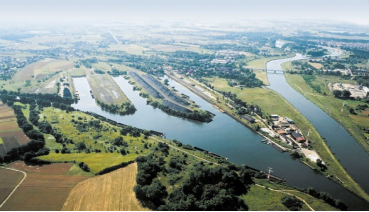
View of the Port of Koźle, Gliwice Canal and the Oder River
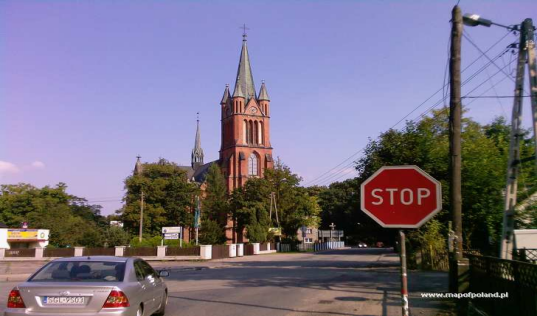
Church - Kedzierzyn-Kozle
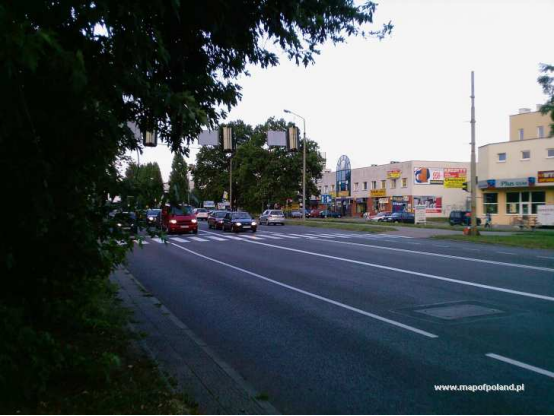
John Paul II Avenue - Kedzierzyn-Kozle
-We invite you for an interesting journey around Kędzierzyn-Koźle. The city is characterized by an attractive landscape and an industrial development friendly location. The proximity of the A4 motorway, the international railway line running through the city and the Odra River waterway make the city a center with incredible potential and development opportunities.
-The city offers many attractions in every area of life. A rich industrial base is a stable foundation for the development of entrepreneurship and economy. The vicinity of vast green areas allows for active recreation in the bosom of nature, and the wide cultural offer makes it impossible to get bored here. Do you need more arguments? We cordially invite you to visit Kędzierzyn-Koźle, and you will see for yourself that we are the City of Opportunities.
Ⅵ.History and Culture
-Ancient legend says that centuries ago, in a pool of the Oder River, close to a small town, a powerful stronghold once stood, where the three Kozłowie brothers lived. Although they could boast of a knight’s crest, they lived from robbery of merchant caravans on the nearby route connecting far-away Italy with the Pomeranian country, which carried amber, oil and craft goods. The Kozłowie were also very troublesome for the neighbouring people. When there were no more merchants and the trade route grew mostly empty, they attacked the neighbouring villages and towns, their shameful expeditions organized mainly at night. The glow from burning thatches could be seen even in distant localities.
-No wonder that the news about their activity quickly reached the lord of those lands, the Duke of Opole and Raciborz – Mieszko I Tanglefoot. The numerous expeditions undertaken by him were not able to catch the knights – robbers who always were able to hide themselves in the difficult to conquer stronghold. Also a high bounty on their heads was not attractive, because the people were afraid of those brutes. And years were passing by.
-In the meantime, in a small town located near the Koźle stronghold, a young, brave and clever town butcher named Jacob lived. Because of his trade, he not infrequently visited the stronghold of Kozłowie brothers. He got familiar with many secrets of various passages and corners. He offered his services to the duke. On a dark, autumn night, he led Mieszko’s warriors through the underground passage to the dungeons and from there to the inside of the stronghold. After a short but fierce struggle, the surprised robbers were captured. Soon they were punished in proportion to their crimes; all three died in the depths of the Oder River, pushed from the highest tower of their own stronghold. To commemorate this event, every year on St. Jacob’s Day, the elders of the butchers’ guild organized a march in the streets of the city with a figure of a goat which then was thrown from the tower at the Racibor gate onto the paved street. The vacant stronghold of the Kozłowie brothers gradually became a ruin – but the neighbouring town was developing. In its emblem three goat heads appeared and the custom of the march with a reed goat on the first of June has survived as a testimony to the ancient events.
-In this way, half fairy tale, the local legend describes the genesis and establishment of the town Koźle on the basis of which today a large, modern industrial agglomeration of the name Kędzierzyn-Koźle was set up.
-HISTORY OF THE CITY
-Kędzierzyn-Koźle, in its present administrative form, was established in 1975 from the merger of the towns Koźle, Kędzierzyn, Kłodnica, Sławięcice and the area of the commune Sławięcice.
-The history of the city is closely connected with the history of Koźle. The oldest records that mention it date from 1108, when the knights of Bolesław Wrymouth defended the Koźle castle-town against the attacks of the Moravians. Koźle received its town charter likely as early as 1281 and at the latest in 1293, and in parallel to Koźle, the other settlement centre of Kędzierzyn-Koźle developed. This was Sławięcice. Between 1246-1260 this locality also received its town charter. In the 13th century, the existence of Kłodnica and Kędzierzyn was also noted in documents. These localities, however, do not appear with anything important in the history of the neighbouring vicinity. From 1281-1355, the area of today’s city became part of the sovereign Duchy of Koźle – Bytom. After 1289, the duchy was a fief of the Czech king, and in 1526 together with the Czech lands came under the power of the House of Habsburg. At the beginning of 1741, those lands were seized by the Prussians. After 1743, they started to develop and the Koźle fortress was set up by the Austrians. This limited the territorial development of the town and caused stagnation. But Sławięcice developed very well, and it was there at the end of the 18th century that numerous manufacturing facilities were established. The favourable position of these localities improved after construction of the Kłodnica Channel between 1792 – 1812. The beginning of the 19th century brought to destruction to Koźle as a result of the siege during the Napoleonic War of the Fourth Coalition, which took place from 23 January to 9 July, 1807. Despite considerable losses, the Koźle fortress survived the siege.
-The defeats suffered by Prussia in the wars with Napoleon accelerated the period of reforms in the country. As a result of them, all the localities included in Kędzierzyn-Koźle were liberated from serfdom. One of the first villages which ceased working under serfdom was Kłodnica. This happened in 1814. The effect of the administrative reforms was the appointment of a 24-person town council in 1808 in Koźle headed by a mayor. In 1845, the railway line Opole – Gliwice was opened. After that, Kędzierzyn began to gain importance near where the railway station was located. At the end of the 19th century, after demolition in 1873 of the Koźle fortress, the economic development of the town began. Between 1891 – 1908, the Koźle port was built as well as several industrial factories. And the economic development of Sławięcice stopped, as it did not withstand the competition from the Upper Silesian industry.
-In the years of the Second World War, within the boundaries of the present-day city, large chemical works were constructed which produced for the demands of the war. In the 1930s, the town was connected by the Gliwice Canal with the Upper Silesia.
-The liberation of today’s Kędzierzyn-Koźle took place from the end of January to the second half of March, 1945. The Polish administrative authorities took over the town in the period between 23 March to 24 April 1945. On the ruins of the German chemical works, the Nitrogen Works “Kędzierzyn” and the Chemical Works “Blachownia” were founded. Also several other large industrial plants were constructed. Rapidly developing Kędzierzyn received its urban charter in 1951. In 1970, the Kędzierzyn Canal, a branch of the Gliwice Canal, was opened. In 1973, Kłodnica and Sławięcice received their urban charters.
-MONUMENTS – WORTH SEEING
-The following memories of the past in Kędzierzyn-Koźle should be included as the most interesting:
-The remains of the castle in Koźle (Kraszewskiego Street). These occupy the southwestern part of the urban settlement Stare Miasto (Old Town) in Koźle; they are located on a small, artificial hill. The castle was erected at the turn of the 14th century after the destruction caused by fires and was reconstructed in the second half of the 16th century. The castle was destroyed once more during the siege by the French and Bavarians in 1807. To the present, a retaining wall has been preserved together with fragments of semi-circular bastion. The most interesting part of the castle is the Tower, partially reconstructed, now the seat of the Koźle Land Society (Towarzystwo Ziemi Kozielskiej) and the museum. A complex of buildings called the under-castle (Podzamcze) is in relatively good condition. It dates from 1563-1584, and was a military hospital during the siege in 1807.
-The fragments of the past fortifications of the Koźle fortress are (Konopnicka, Żeromskiego, Piramownicza, Skarbowa, Planty, Zamkowa streets; Garncarska Street – the old gunpowder mill; Targowa Street – old barracks from 1776 – 1778, many times reconstructed in the 19th and 20th centuries ). Its beginnings reach back to the 18th century, when the Austrians built a zone of fortifications around the town consisting of earth embankments, dikes and ditches. Further construction was undertaken by the Prussians, who took over Koźle in February, 1741. Up until its demolition in 1873, the fortress was systematically modernized. Today, fragments of the fortifications survive on the left bank of Oder River which include the centre of Koźle and also the fortifications on the right bank, dispersed over quite large area that includes Koźle island. From the left-bank fortification, it is worth seeing the five corners of the circle of the main embankment, the fragments of the inner walls and the kernwerk with several powder magazines. The moat has remained almost entirely preserved, transferred already in the 20th century into the Town Planty (a park). Also the Większyce Redoubt has partially survived and the remains of the former casemates.
-The most precious remains of the right-bank fortifications of Koźle fortress is Montalembert’s Tower, located in Portowa Street within what is known as Frederick William’s Fort, which was “all the rage” of the art of engineering of the turn of the 19th century. The round tower (so called Rondel) is 33.9 m wide at the base and 24.5 m high, and it could contain on each of two floors 28 cannons with crew, ammunition and necessary supplies. Up to the siege of the Kożle fortress by Napoleon’s army in 1807, only the main body of the tower had managed to be erected –the fort surrounded by the moat and the earth embankment. The building was finally finished in 1829.
-The historical Kłodnica Canal, connecting Koźle with Gliwice (Kłodnica). It was built from 1792 – 1812 and is one of the oldest European navigation channels equipped with water locks. The section passing through Kędzierzyn-Koźle belongs to the best preserved.
-The park and palace complex in Sawięcice (Sławięcicka, Sadowa streets) – here the 19th century landscape park has been preserved in good condition (one of the largest parks in the Opole region) as well as the gardener’s house built about 1803 in the late-neoclassical style. The baroque “Belvedere” garden pavilion of 1802 avoided war damage as did the main entrance to the palace.
-St. Sigismund and St. Hedwig’s Church in Koźle (Złotnicza Street) – mentioned in 1295, developed in the 15th century, partially reconstructed in the 18th and 19th centuries. Gothic with Gothic-renaissance tower, three-naves, pseudo-hall. In the side Chapel of the Blessed Virgin Mary, an image of the Mother of God with the Child Jesus is located (known as the Koźle Mother of God), which is dated from the beginning of the 15th century.
-The post-monastic Church of the Assumption of Mary in Koźle (Czerwińskiego Street) – baroque, built from 1751 - 1753. In 1810, the church was changed into a storehouse. Beside the church, the complex of buildings of the former Franciscan cloister of 1753 is located.
-St. Nicholas’s Church in Kędzierzyn (Judyma Street) – neo-Gothic, built in the 19th century. The baroque image of St. Anthony from the late the 18th century is worth seeing.
-St. Catherine’s Church in Sławięcice (Staszica Street) – neo-Gothic, built from 1864-1869. The parish (late-neoclassical from 1852, reconstructed after 1945) is also historical as well as the outbuilding from the mid19th century and the summerhouse in the garden (from 1800).
-The Evangelical Church (Głowackiego Street) – neo-Gothic from the 19th century.
-The port complex in Koźle – Port (Żeglarska Street). Built in stages between 1891 - 1908, it has three dock basins separated by piers. Today, the original quays are preserved in almost unchanged condition and the stevedoring devices, so-called wagon tipplers, also the building of port authorities is an interesting monument.
-Koźle Lock (Łukasiewicza Street) – built in 1830 from elements of the wooden predecessor of 1812. Thoroughly repaired after a flood in 1997.
-The crematory building of the Nazi camp in Sławięcice (Spacerowa Street).
-The Villain Chapel (Wyspiańśkiego Street) – built in 1814 to commemorate the liberation of Kłodnica peasants from serfdom.
-The water seal in Lenartowice (Nowowiejska Str.) here the Kłodnica River flows under the Gliwice Canal; there are only a few such places in Europe where the river flows under the canal.
Ⅶ.Other Information
-Kędzierzyn-Koźle is an ideal place for people who want more - they want to live life to the full, draw positive energy from it, work in development companies, and spend time actively with their family after work. If you're here - you've come to the right place.
-We invite you for an interesting journey around Kędzierzyn-Koźle. The city is characterized by an attractive landscape and an industrial development friendly location. The proximity of the A4 motorway, the international railway line running through the city and the Odra River waterway make the city a center with incredible potential and development opportunities.
-The city offers many attractions in every area of life. A rich industrial base is a stable foundation for the development of entrepreneurship and economy. The vicinity of vast green areas allows for active recreation in the bosom of nature, and the wide cultural offer makes it impossible to get bored here. Do you need more arguments? We cordially invite you to visit Kędzierzyn-Koźle, and you will see for yourself that we are the City of Opportunities.
Ⅷ.Contact Information
Mayor Sabina Nowosielska
E-mail: infoprom@kedzierzynkozle.pl
Phone: 077 40-50-311 (central)
Fax: 077 40-50-305
Office NIP: 749-00-15-170
Office REGON: 000-524-507
